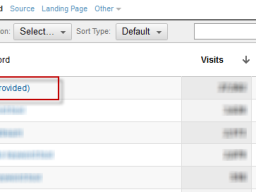On Thursday, September 26th, Google announced that its search algorithm, the complex equation used to return answers to users search queries, has been rewritten for the first time in twelve years. In keeping with Google’s pattern of naming things after animals, this algorithm overhaul has been named “hummingbird”, because the new algorithm is faster and more precise. Unlike previous updates like Panda and Penguin which were major changes to parts of the old algorithm, hummingbird is a new search engine, but does include parts of the old one like Penguin and Panda.
Meanings More Than Words
One of the most significant changes that comes with Hummingbird is “conversational search“, where the search engine not only understands what you have asked, but will also understand follow up queries that add to or refine the original search. On the internet in general, and with mobile devices in particular due to their speech-to-text abilities, searchers often find it more useful to have something like a conversation.
Google already did a pretty good job of answering what many SEO’s call “long tail” searches which are more like real language than simple keywords, but with Hummingbird, there is more of a focus on these real language searches.
I am sure this is an oversimplification of how it all works, but the idea is that the new Google search algorithm pays more attention to each word in a query, ensuring that the whole query phrase or conversation and its meaning, is taken into account, rather than just a few keywords.
How Does Hummingbird Impact SEO?
While it is still a little early to draw good conclusions, we can assume a couple of things from the information we have about Google’s hummingbird.
- It does not seem to be punitive. Where previous updates often penalized specific tactics that some webmasters and SEOs used to try to manipulate search results (link spam, keyword stuffing, etc), Hummingbird, does not appear to contain any new, sweeping penalties beyond those that were already included in the old algorithm.
- Old style SEO that is focused on just a few keywords will probably be even less effective than it is now. The value of an SEO strategy that only targets a handful of keywords has been slipping rather quickly over the last few years. This is partly because of the algorithm updates and other changes within Google, but also due to the changes in the way people search. More people are using smartphones with apps like Siri that encourage a more conversational style of searching, and search engine users are becoming more comfortable with searching for real phrases, rather than having to think like a computer and carefully craft their search queries.
About That “Long Tail…”
Google launched the new algorithm quietly about a month ago, which makes it a little difficult to do a good before/after comparison. But after taking a look at a sampling of data for several different sites over the past few months, I have seen the following:
Sites that were already receiving a decent amount of traffic from real language searches are now doing even better. More traffic from organic search, and that traffic seems to be much better targeted to the users’ actual search. So it is not just more, but better traffic. Giving users what they want to find is the goal of Google’s organic search and should be the goal of any website that relies on search traffic. So this is good for just about everyone.
Giving users what they want to find is the goal of Google’s organic search and should be the goal of any website that relies on search traffic.
The sites that have performed the best in the past month were, not surprisingly, full of good content. For sites that are not easily supported by lots of great content – like online stores – the sites that had product descriptions that went beyond the manufacturer’s boilerplate text have seen improvements over their more generic competitors. Typically, these sites already outperformed those which still rely on “old school” search engine optimization. Now it appears that content-rich sites are seeing more gains in organic search from longer real language searches, while those sites that were already struggling to get any long tail traffic are flat or declining.
Again, it is still a little early to make sweeping generalizations about what exactly Google’s new algorithm means in terms of how SEO is handled. But it does appear that this hummingbird has a long tail.
If you are unfamiliar with the term “long tail”, you may be wondering how to target such searches and take advantage of the new algorithm. There isn’t an easy formula like there once was for keyword-based SEO (put keyword in title, use keyword in content, get some links using keyword, etc).
The key is in the content
Website content that thoroughly covers a topic or subject, rather than targeting just one word or phrase is much more likely to be useful, and easily understood by people and search engines. Therefore, it should yield better performance in organic search. While you can craft your content strategy to capture more of these searches, it is not really productive to try to come up with a list of long phrases to try to fit into your site repeatedly. Instead, write about the topic well, making sure it is informative and useful. Just like writing for your high school or college English Composition classes: be clear, informative, and use a variety of words and phrases. At some point in my education, one or more instructors told me, “do not use the same word more than two or three times unless you can not avoid it. Use synonyms.” That advice has worked very well when applied to optimizing website content.
Long tail search is not really a new idea in SEO, but Hummingbird and Google’s evolution toward real language, semantic, conversational search makes the ability to rank for long searches a necessity.



